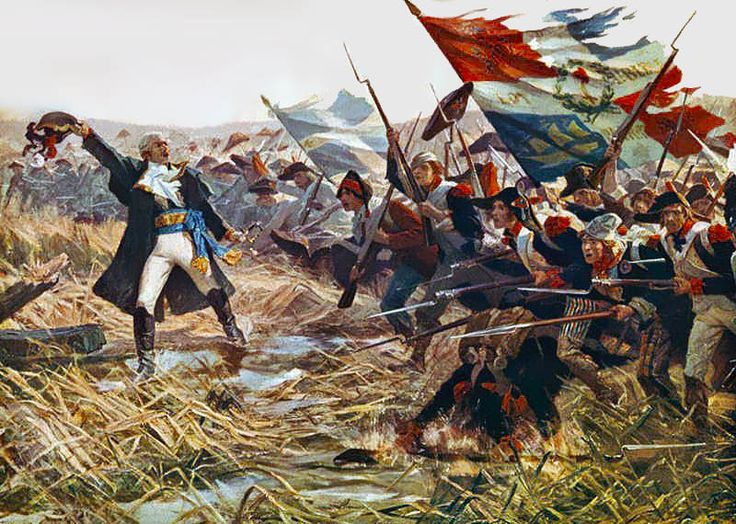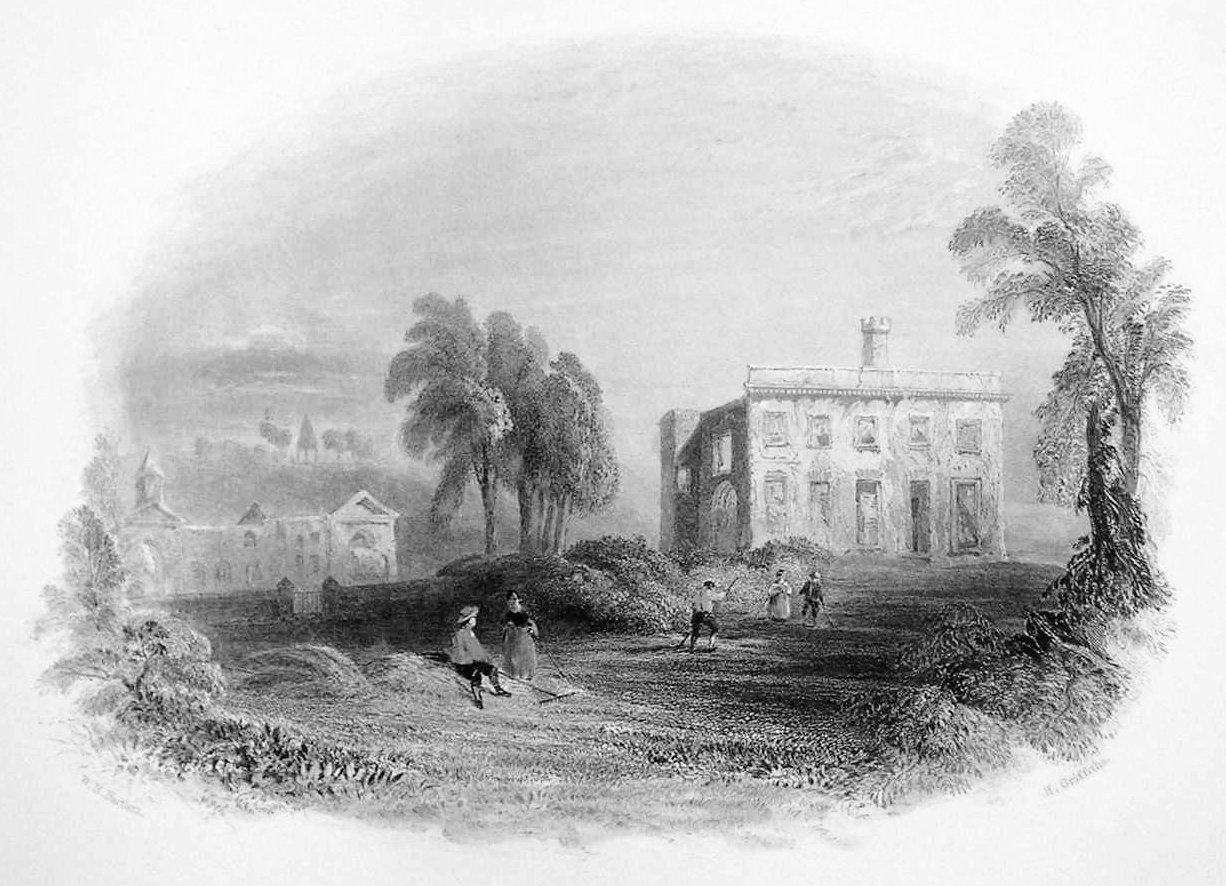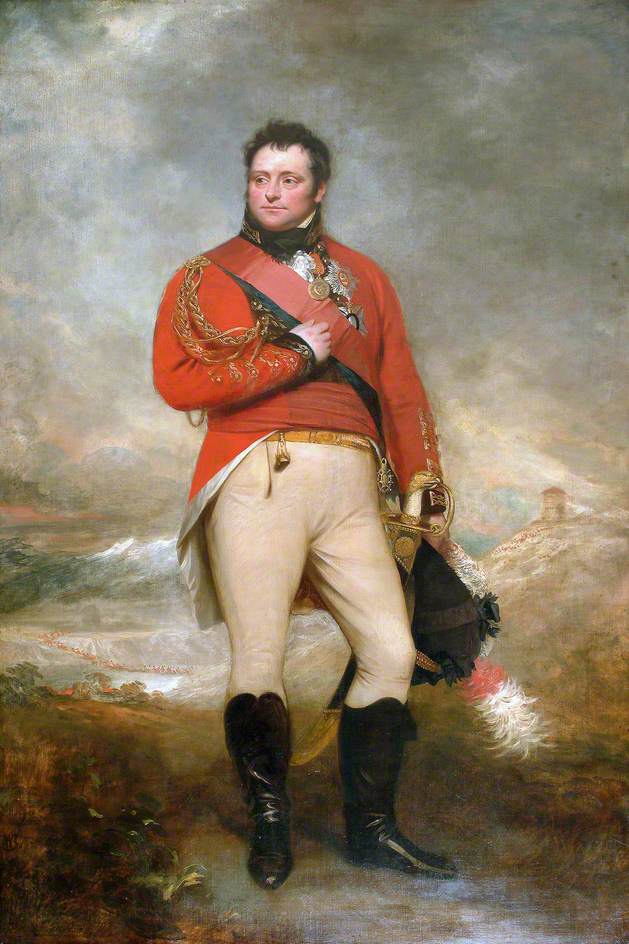|
Sir William Erskine, 2nd Baronet
Major-General Sir William Erskine, 2nd Baronet (30 March 1770 – 1813) was an officer in the British Army, served as a member of Parliament, and achieved important commands in the Napoleonic Wars under the Duke of Wellington, but ended his service in insanity and suicide. He was the eldest son of Lieutenant-General Sir William Erskine, 1st Baronet and his second wife, Frances. He succeeded to the baronetcy on his father's death in 1795.H. M. Stephens, 'Erskine, Sir William, second baronet (1770–1813)', rev. Roger T. Stearn, Oxford Dictionary of National Biography, Oxford University Press, 200Retrieved 30 May 2008/ref> Early career Erskine was commissioned into the 23rd foot 1785, and transferred to the 5th Dragoons as a lieutenant in 1787, and in 1791 became captain of the 15th King's Light Dragoons (the unit his father had served in with distinction) on 23 February 1791. His first active service was in Flanders 1793–95, during the French Revolutionary Wars, when ... [...More Info...] [...Related Items...] OR: [Wikipedia] [Google] [Baidu] |
Erskine Baronets
There have been five baronetcies of the United Kingdom created for a person with the surname Erskine, two in the Baronetage of Nova Scotia, one in the Baronetage of Great Britain and two in the Baronetage of the United Kingdom. Two of the creations are extant as of 2010. The Erskine Baronetcy, of Alva in the County of Fife, was created in the Baronetage of Nova Scotia on 30 April 1666 for Charles Erskine. The third Baronet was one of the Scottish representatives to the 1st Parliament of Great Britain and also represented Clackmannanshire. The fourth Baronet was killed in action at the Battle of Lauffeld in 1747. The fifth Baronet sat as Member of Parliament for Ayr Burghs and Anstruther Easter Burghs. He married Janet, daughter of Peter Wedderburn (a Lord of Session under the judicial title of Lord Chesterhall) and sister of Alexander Wedderburn, 1st Earl of Rosslyn. Their son, the sixth Baronet, succeeded to the earldom of Rosslyn in 1805 according to a special remainder in th ... [...More Info...] [...Related Items...] OR: [Wikipedia] [Google] [Baidu] |
Flanders Campaign
The Flanders Campaign (or Campaign in the Low Countries) was conducted from 20 April 1792 to 7 June 1795 during the first years of the War of the First Coalition. A coalition of states representing the Ancien Régime in Western Europe – Austria (including the Southern Netherlands), Prussia, Great Britain, the Dutch Republic (the Northern Netherlands), Hanover and Hesse-Kassel – mobilised military forces along all the French frontiers, with the intention to invade Revolutionary France and end the French First Republic. The radicalised French revolutionaries, who broke the Catholic Church's power (1790), abolished the monarchy (1792) and even executed the deposed king Louis XVI of France (1793), vied to spread the Revolution beyond France's borders, by violent means if necessary. A quick French success in the Battle of Jemappes in November 1792 was followed by a major Coalition victory at Neerwinden in March 1793. After this initial stage, the largest of these for ... [...More Info...] [...Related Items...] OR: [Wikipedia] [Google] [Baidu] |
Flanders
Flanders (, ; Dutch: ''Vlaanderen'' ) is the Flemish-speaking northern portion of Belgium and one of the communities, regions and language areas of Belgium. However, there are several overlapping definitions, including ones related to culture, language, politics, and history, and sometimes involving neighbouring countries. The demonym associated with Flanders is Fleming, while the corresponding adjective is Flemish. The official capital of Flanders is the City of Brussels, although the Brussels-Capital Region that includes it has an independent regional government. The powers of the government of Flanders consist, among others, of economic affairs in the Flemish Region and the community aspects of Flanders life in Brussels, such as Flemish culture and education. Geographically, Flanders is mainly flat, and has a small section of coast on the North Sea. It borders the French department of Nord to the south-west near the coast, the Dutch provinces of Zeeland, North Br ... [...More Info...] [...Related Items...] OR: [Wikipedia] [Google] [Baidu] |
5th Royal Irish Lancers
The 5th Royal Irish Lancers was a cavalry regiment of the British Army. It saw service for three centuries, including the First World War. It amalgamated with the 16th The Queen's Lancers to become the 16th/5th Lancers in 1922. History Early wars The regiment was originally formed in 1689 by Brigadier James Wynne as James Wynne's Regiment of Dragoons. It fought at the Battle of the Boyne in July 1690 and at the Battle of Aughrim later that month under King William III. Renamed the Royal Dragoons of Ireland in 1704, it went on to fight under the Duke of Marlborough at the Battle of Blenheim in August 1704 during the War of the Spanish Succession. At the Battle of Ramillies in May 1706 the regiment helped capture the entire French "Regiment du Roi", after which it fought at the Battle of Oudenarde in July 1708 and at the Battle of Malplaquet in September 1709. In 1751, it was retitled 5th Regiment of Dragoons and in 1756 it became the 5th (or Royal Irish) Regiment of Drago ... [...More Info...] [...Related Items...] OR: [Wikipedia] [Google] [Baidu] |
Arthur Wellesley, 1st Duke Of Wellington
Arthur Wellesley, 1st Duke of Wellington, (1 May 1769 – 14 September 1852) was an Anglo-Irish people, Anglo-Irish soldier and Tories (British political party), Tory statesman who was one of the leading military and political figures of United Kingdom of Great Britain and Ireland, 19th-century Britain, serving twice as prime minister of the United Kingdom. He is among the commanders who won and ended the Napoleonic Wars when the coalition defeated Napoleon at the Battle of Waterloo in 1815. Wellesley was born in Dublin into the Protestant Ascendancy in Kingdom of Ireland, Ireland. He was commissioned as an Ensign (rank), ensign in the British Army in 1787, serving in Ireland as aide-de-camp to two successive lords lieutenant of Ireland. He was also elected as a Member of Parliament (United Kingdom), member of Parliament in the Irish House of Commons. He was a colonel by 1796 and saw Flanders Campaign, action in the Netherlands and in India, where he fought in the Fourth Angl ... [...More Info...] [...Related Items...] OR: [Wikipedia] [Google] [Baidu] |
Battle Of Almaraz
The Battle of Almaraz was a battle of the Peninsular War which took place on 18–19 May 1812, in which the Anglo-Portuguese Army under Lord Hill destroyed a French pontoon bridge across the River Tagus, in Almaraz, Spain. The bridge was protected by two French garrisons at either end. The action was swift-moving, deceptive, and daring. The decisive result produced a substantial improvement in the Allied position by keeping French forces separated ahead of the imminent Battle of Salamanca. Background By late April 1812, the Duke of Wellington had successfully captured the strategic border fortresses of Badajoz and Ciudad Rodrigo, commanding the two major routes between Spain and Portugal. He now prepared to advance into Spain with the largest army he had commanded to date, which was strong enough to take on any French army. There were two French armies in Spain, however: Marmont's Army of Portugal, garrisoned near Salamanca, and Soult's Army of the South. The Tagus Riv ... [...More Info...] [...Related Items...] OR: [Wikipedia] [Google] [Baidu] |
Battle Of Arroyo Dos Molinos
The Battle of Arroyo dos Molinos took place on 28 October 1811 during the Peninsular War. An allied force under General Rowland Hill trapped and defeated a French force under General Jean-Baptiste Girard, forcing the latter's dismissal by the Emperor Napoleon. A whole French infantry division and a brigade of cavalry were destroyed as viable fighting formations. Background In the middle of October, 1811 a French division under the command of Jean-Baptiste Girard crossed the River Guadiana at Mérida and campaigned in Northern Extremadura. Major-General Rowland Hill consulted with Lieutenant-General Wellington and received permission to use his 2nd Division to pursue Girard. Upon learning that the French had halted at the village of Arroyo dos Molinos, near Alcuéscar, Hill force-marched his troops for three days in poor weather so as to catch the French before they moved on. By the evening of the 27 October, Hill's forces had reached a point four miles from the French ... [...More Info...] [...Related Items...] OR: [Wikipedia] [Google] [Baidu] |
Blockade Of Almeida
In the Blockade of Almeida (14 April – 10 May 1811) a French garrison under Antoine François Brenier de Montmorand was surrounded by approximately 13,000 Anglo-Allied soldiers led by Generals Sir Alexander Campbell, 1st Baronet and Sir William Erskine, 2nd Baronet. After a French relief attempt failed, Brenier and his troops broke out at night after blowing up portions of the fortress. To the fury of the British army commander Arthur Wellesley, Viscount Wellington, most of the French escaped due to their commander's single-minded determination, British fumbling, and remarkably good luck. The action took place during the Peninsular War portion of the Napoleonic Wars. Almeida, Portugal is located near the Spanish border about northeast of Lisbon. The town was originally captured from a Portuguese garrison during the 1810 Siege of Almeida. Background On 11 October 1810, Marshal André Masséna's French army found itself confronted by the elaborately built and well-defe ... [...More Info...] [...Related Items...] OR: [Wikipedia] [Google] [Baidu] |
Battle Of Fuentes De Oñoro
In the Battle of Fuentes de Oñoro (3–5 May 1811), the British–Portuguese Army under Wellington checked an attempt by the French Army of Portugal under Marshal André Masséna to relieve the besieged city of Almeida. A bloody stalemate was not the sort of battle that had been expected to follow André Masséna's expulsion from Portugal. His confidence and moral authority having been much boosted by Torres Vedras, the spring of 1811 found Wellington intending to move over to the offensive, for which policy he had received de facto authorisation from his political masters in London, where talks of major reductions in the size of the army employed in Portugal had been replaced by promises of major reinforcements. Supply difficulties, sickness amongst the troops and want of siege artillery ensured that in the short term no great strokes of strategy could be envisaged, but it was hoped that Almeida, Ciudad Rodrigo and Badajoz might be all recaptured, thereby opening t ... [...More Info...] [...Related Items...] OR: [Wikipedia] [Google] [Baidu] |
Battle Of Sabugal
The Battle of Sabugal was an engagement of the Peninsular War which took place on 3 April 1811 between Anglo-Portuguese forces under Arthur Wellesley (later the Duke of Wellington) and French troops under the command of Marshal André Masséna. It was the last of many skirmishes between Masséna's retreating French forces and those of the Anglo-Portuguese under Wellington, who were pursuing him after the failed 1810 French invasion of Portugal. In poor weather, with heavy rain and fog, Allied forces succeeded in forcing the demoralized French force into retreat. The victory was lauded by the British; Sir Harry Smith, then a junior officer of the 95th Rifles and a participant in the battle, remarked "Oh, you Kings and usurpers should view these scenes and moderate ambition" while Wellesley later referred to the Light Division's action in the battle as "one of the most glorious that British troops were ever engaged in". Background By October 1810, Marshal Massena’s F ... [...More Info...] [...Related Items...] OR: [Wikipedia] [Google] [Baidu] |
Battle Of Redinha
The Battle of Redinha was a rearguard action which took place on March 12, 1811, during Masséna's retreat from Portugal, by a French division under Marshal Ney against a considerably larger Anglo-Portuguese force under Wellington. Challenging the Allies with only one or two divisions, Ney's 7,000 troops were pitched against 25,000 men. In a typical rearguard action, Ney delayed the Allied advance for a day and bought valuable time for the withdrawal of the main body of the French army. Redinha was the second and most successful rearguard action fought during Masséna's retreat from the Lines of Torres Vedras in the spring of 1811. Having held off the British at Pombal on 11 March, Marshal Ney and the French rearguard had retreated to Redinha. Here he took up an apparently vulnerable position, with Mermet's division on a plateau south of the village, and Marchand's division north of the village on the far side of the Ancos River, linked by a narrow bridge, but Wellington was ... [...More Info...] [...Related Items...] OR: [Wikipedia] [Google] [Baidu] |
Battle Of Pombal
The Battle of Pombal (March 11, 1811) was a sharp but ultimately indecisive skirmish fought at the eponymous town during Marshal Masséna's retreat from the Lines of Torres Vedras, the first in a series of lauded rearguard actions fought by Michel Ney. The French were pursued by Wellington and his British-Portuguese army but the Allied advance was energetically contested by Ney's efforts, preventing Wellington from crushing Masséna's army when it was critically vulnerable. At Pombal, Ney turned part of his rearguard to face the larger Anglo-Portuguese forces and checked their advance, before withdrawing to rejoin the main body of Masséna's army. Background Unable to break the Lines of Torres Vedras, Ney was given charge of the rear-guard while the main body of the French army withdrew from Portugal. The rear-guard consisted of Mermet's and Marchand's divisions. Marshal Ney deceived the British, maneuvering his troops so that Wellington believed that the French w ... [...More Info...] [...Related Items...] OR: [Wikipedia] [Google] [Baidu] |

_p012_Bugler_Sherlock.jpg)

